The CIO Transformation Playbook: 12 Weeks from Firefighter to Strategic Catalyst
Table of Contents
ToggleYou’re the CIO. It’s Monday morning, and your inbox is already overflowing. Three different department heads are breathing down your neck about delayed projects. The CEO wants to know why the digital transformation initiative is six months behind schedule. Your development team is drowning in technical debt, and somehow, despite hiring more people last quarter, your backlog keeps growing like weeds after a spring rain.
Does that sound familiar? Being constantly in the hot seat, you’re likely nodding your head right now. The truth is, we’re living through what I call the “Great Acceleration”—where business demands are multiplying faster than Moore’s Law, but our ability to deliver is stuck in neutral.
In today’s fast-paced marketplace, CIOs face a crucial challenge that keeps them awake at night: keep delivering technology that meets business demand faster than backlog growth. Business leaders across HR, Finance, Security, Supply Chain, Admin and other functions constantly weigh in with new system needs—and the CIO’s program office scrambles to prioritize like a short-order cook during the lunch rush. But here’s the kicker: often, backlogs grow faster than they shrink, dragging down business agility and turning innovative leaders into professional firefighters.
This isn’t just an IT problem anymore. It’s an existential business challenge that’s reshaping how enterprises compete, adapt, and survive in markets that change faster than weather patterns in springtime.
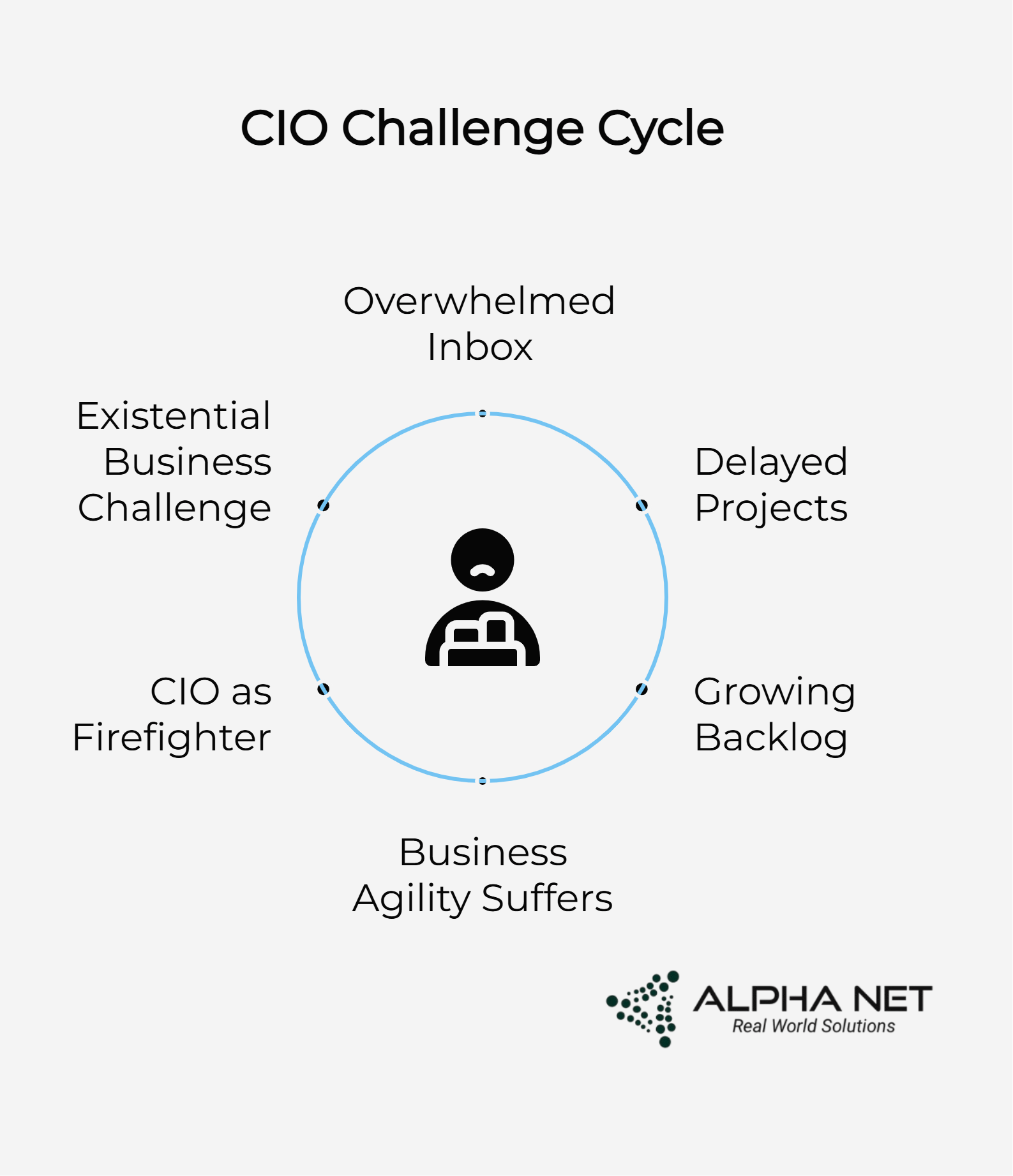
1. The Silent Crisis: Priorities, People, & Technical Debt
The Demand–Delivery Gap: When Success Becomes Your Biggest Problem
Here’s a paradox that would make Kafka proud: the more successful your business becomes, the more technology demands pile up on your desk. Every new customer segment brings fresh integration needs. Each regulatory change spawns a dozen compliance requirements. Market expansion means new systems, new interfaces, new headaches.
With business requirements doubling down like a poker player on a winning streak, IT departments struggle to stay ahead of the curve. The numbers tell a sobering story: the average IT department invests more than half (55 percent) of its technology budget on maintaining business operations and only 19 percent on building innovative new capabilities according to Deloitte’s global CIO survey research. It’s like trying to win a race while dragging an anchor—you might make progress, but you’re certainly not setting any speed records.
The reality hits even harder when you consider that eighty-three percent of IT leaders and 88% of LOB leaders expect full-year spending in 2024 to be higher or in line with original 2024 budgets despite inflation and potential recession concerns, according to IDC’s Future Enterprise Resiliency and Spending Survey. Meanwhile, Forrester projects a 5.3% increase in IT spending overall in 2024, compared to 4% in 2023, yet most of this increase gets absorbed by maintenance and operational costs rather than driving innovation forward.
Think about it this way: when was the last time you had a conversation with your CEO about something other than why Project X is delayed or why System Y keeps breaking? When did you last walk into a board meeting with exciting news about innovation rather than explanations about overruns?
Technical Debt: The Interest That Never Stops Compounding
Technical debt accumulates like interest on a credit card you never pay off. Every quick fix, every “temporary” workaround, every shortcut taken under pressure adds another layer to what I call the “complexity sandwich”—and unfortunately, it’s not nearly as tasty as it sounds.
Industry research reveals the true scope of this challenge. As much as 71 percent of the value from business transformations across sectors depends on technology, according to McKinsey research, yet more than a third (34 percent) identify the complexity of technology systems and environments as the top contributor to project failure based on Deloitte’s CIO survey findings.
Unchecked backlog leads to mounting technical debt that manifests in ways that would make a horror movie director proud: shadow IT sprouting up like mushrooms after rain, fragmented systems that talk past each other like teenagers, and a trolley full of legacy issues that nobody wants to touch but everyone knows needs fixing. McKinsey calls it “rewiring the enterprise”—shifting the tech mindset toward business value rather than just keeping the lights on.
But here’s what really keeps CIOs up at night: technical debt doesn’t just slow you down—it actively sabotages your ability to respond to new opportunities. When a game-changing market opportunity presents itself, you’re not asking “How fast can we build this?” You’re asking “How many existing systems will break if we try?”
The financial impact is staggering. Gartner research cited by Deloitte indicates that through 2020, for every dollar invested in digital business innovation, enterprises will need to spend at least three times as much to continuously modernize the legacy application portfolio.
The People Puzzle: Skills, Retention, and the Great Resignation Aftermath
Let’s talk about the elephant in the room: finding and keeping the right people. The technology talent market resembles a game of musical chairs where there are fewer chairs every round, and the music never stops. You finally hire that senior developer with the perfect skill set, only to watch them leave six months later for a 30% salary bump and unlimited PTO at a startup that doesn’t even have a working business model yet.
The stress on cybersecurity teams particularly illustrates this crisis: 66% of cybersecurity professionals report rising stress due to underfunded budgets and growing cyberattacks, per ISACA’s 2024 Cybersecurity survey. Organizations struggle with resource shortages and skills gaps that compound the problem.
Meanwhile, your existing team is burning out faster than a cheap candle. They’re context-switching between projects like pinballs, learning new frameworks every quarter, and spending more time in status meetings than actually building things. The best ones are quietly updating their LinkedIn profiles, while the rest are quietly questioning their career choices.
The skills gap isn’t just about finding people who can code—it’s about finding people who understand both technology and business, who can translate between C-suite visions and database schemas, who can see the forest and the trees simultaneously. These unicorns are rarer than a profitable startup in Silicon Valley.
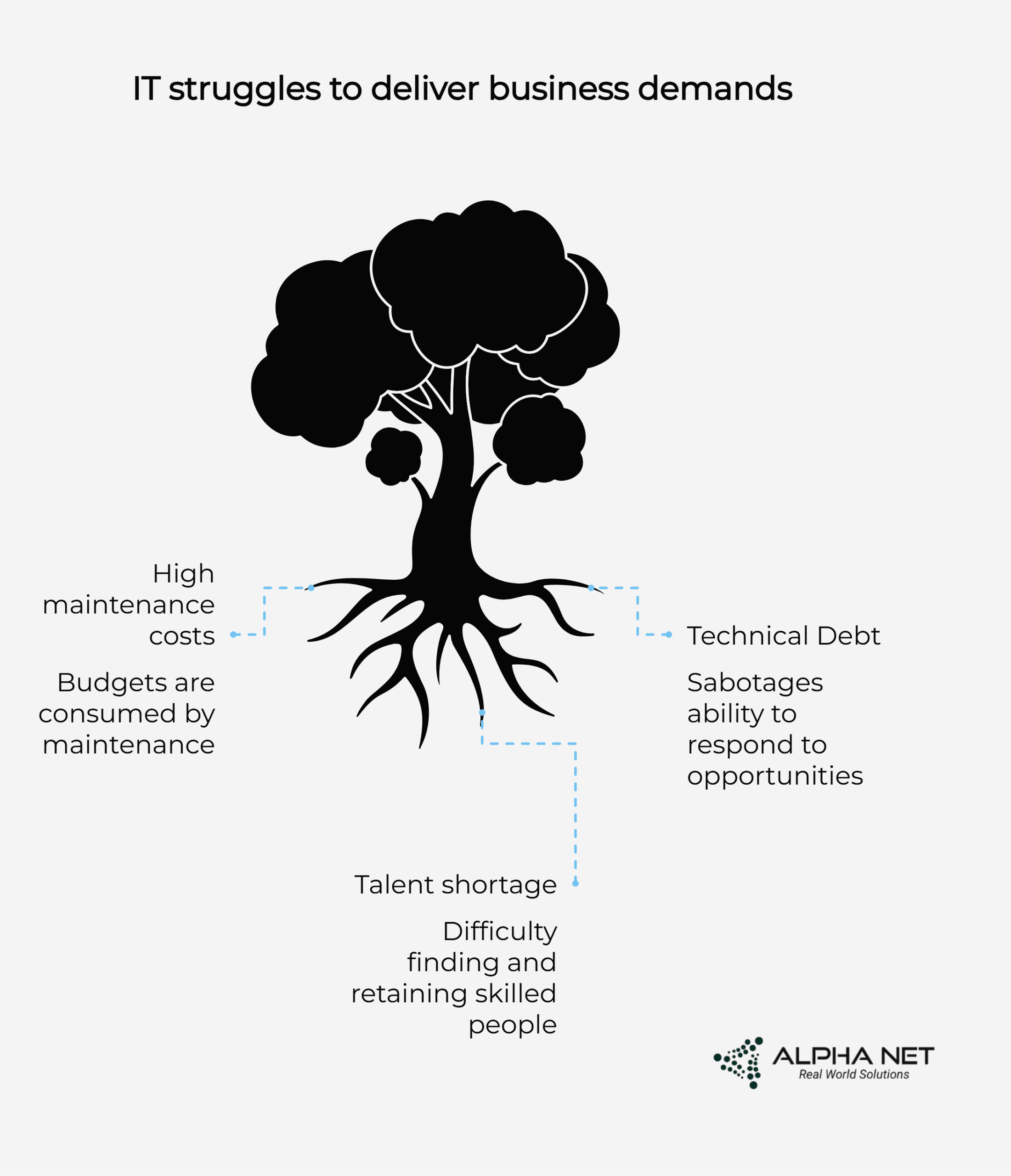
2. The CIO’s Inflection Point: From Firefighter to Strategic Catalyst
The Great Pivot: Redefining the CIO Role
CIOs today sit at a crossroads that feels more like a four-way intersection during rush hour: continue firefighting with the same old playbook, or pivot to become strategic integration officers who meld business and tech with tangible ROI that makes CFOs smile instead of frown. Those who embrace this shift deliver game-changing value that transforms entire organizations, while others risk becoming irrelevant faster than last year’s smartphone model.
The numbers support this transformation imperative. Seventy-two percent of CIOs say projects that are most appealing to CEOs and executive leadership are those that generate revenue or focus on innovation and emerging technology, according to Deloitte’s research. Yet the reality shows a massive gap between executive expectations and current resource allocation.
This isn’t just about changing job descriptions or updating LinkedIn profiles. It’s about fundamentally rewiring how technology leadership operates within the enterprise. The old model—where IT was the “business prevention department” that said “no” to everything—is as dead as the flip phone. The new model requires CIOs to become business accelerators, innovation enablers, and strategic partners who speak fluent business while maintaining deep technical credibility.
The AI Reality Check: Beyond the Pilot Purgatory
Everyone’s talking about AI these days, but here’s a reality check that might sting: McKinsey notes that only 30% of organizations using generative AI for IT report significant impact. The rest are stuck in what I call “pilot purgatory”—running endless proof-of-concepts that generate impressive demos but never quite make it to production where they could actually move the business needle.
The problem isn’t the technology—it’s the approach. Most organizations are treating AI like a science experiment rather than a business tool. They’re optimizing for headlines rather than outcomes, for buzz rather than bottom-line impact. The winners in this space aren’t the ones with the most AI pilots; they’re the ones with the most AI-driven business results.
Meanwhile, AI investments will partly drive a projected 10% bump in IT spending this year, but price hikes of nearly 9% in the cloud and other areas will play a larger role, according to recent CIO research. This creates additional pressure to demonstrate clear ROI from AI initiatives rather than just adding to the cost base.
The Board-Level Reality: Where ROI Meets the Road
Here’s something that might make you uncomfortable: your board doesn’t care about your technical architecture diagrams. They don’t care about your microservices strategy or your cloud migration timeline. What they care about is simple: Are we getting business value from our technology investments, and can you prove it?
This shift toward measurable business outcomes isn’t just a trend—it’s the new reality of enterprise technology leadership. Only a little more than a third of survey participants (37 percent) say they manage investments using well-defined processes or business case templates, according to Deloitte’s findings. CIOs who can’t connect their technology initiatives to clear business metrics are finding themselves in increasingly uncomfortable board meetings, trying to explain why their multi-million-dollar transformation projects haven’t moved the revenue needle.
The governance gap is equally concerning: only 20 percent of CIO survey participants report having a dedicated finance staff tasked with modeling, managing, and measuring the value of IT investments. This lack of financial rigor in technology investment management creates a credibility gap that savvy CIOs must address.
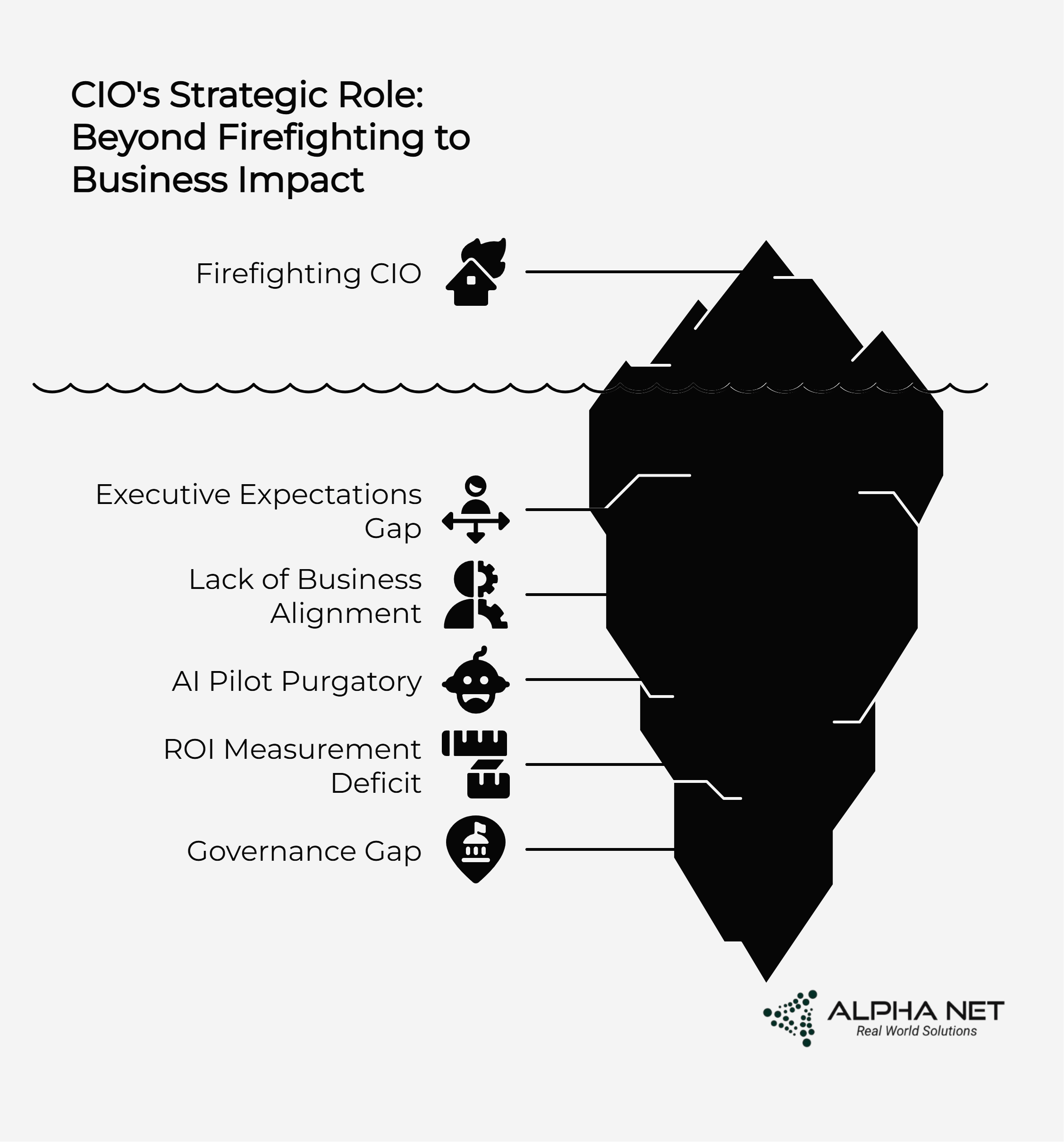
3. Alpha Net’s Dual‑Front Strategy: Teams + Tech
Understanding the Alpha Net Advantage
Alpha Net Consulting doesn’t just throw more bodies at your problems—that’s like trying to solve traffic jams by building more lanes. Instead, we enhance CIO capabilities at two critical layers that work together like a well-oiled machine, addressing both the human and technical dimensions of enterprise transformation.
Our approach recognizes a fundamental truth that many consulting firms miss: technology problems are rarely just technology problems. They’re people problems wrapped in code, process problems disguised as platform issues, and communication breakdowns masquerading as integration challenges.
A. Teams & Talent Augmentation: The Right People at the Right Time
With deep experience spanning HR, Finance, Security, Supply Chain and more, Alpha Net supplies delivery teams that hit the ground running faster than a sprinter hearing the starting gun. These aren’t generic consultants who need six months to understand your business—they’re specialists who’ve been in your shoes, fought your battles, and solved your specific type of problems before.
Our teams implement, integrate, release, and support core platforms like Workday, Oracle, SAP, ServiceNow, Salesforce, and Adobe with the kind of expertise that comes from doing it hundreds of times across dozens of industries. But here’s what sets us apart: they align with CIO strategic objectives while being fluent in business lingo, bridging that crucial gap between technical possibility and business reality.
Think of it this way: when your Finance team asks for real-time reporting capabilities, our consultants don’t just understand the technical requirements—they understand why Finance needs that data, how they’ll use it, and what business decisions depend on it. That context makes all the difference between a successful implementation and an expensive paperweight.
We fill critical expertise gaps without the typical training ramp-up or misaligned skillsets that plague traditional consulting engagements. No more waiting three months for consultants to understand your business context. No more explaining industry basics to people who charge expert rates but need beginner explanations.
B. Technology Excellence & Solutions: Beyond Slideware
Alpha Net delivers enterprise-grade frameworks and solutions that actually work in the real world—not just impressive slideware that looks great in presentations but falls apart when rubber meets road. We’ve learned that businesses don’t need more PowerPoint decks; they need more working systems that solve actual problems.
Our technology solutions span the enterprise spectrum:
HR Technology Mastery: Workday implementations that don’t take two years and double the budget. Release management that doesn’t require holding your breath. Support that actually supports instead of transferring you to three different departments.
Finance Systems Excellence: Oracle and SAP integrations that talk to each other like old friends instead of arguing like distant relatives. Reporting systems that give you answers instead of more questions. Automation that works on Tuesday just as well as it worked on Monday.
Security and Compliance Platforms: Solutions that protect your data without making your users hate their jobs. Compliance frameworks that satisfy auditors without sacrificing productivity. Security measures that feel like guardrails rather than prison walls.
Supply Chain Digitalization: Systems that tell you where your stuff is, when it’s arriving, and what might go wrong before it actually does. Integration that makes your supply chain visible instead of mysterious.
Administrative Service Architectures: The boring but crucial systems that keep everything else running—expense management, procurement, facilities management, vendor coordination—all working together like a symphony instead of a garage band.
These solutions aim to eliminate technical debt by delivering reusable, extensible integrations across departments. Instead of building one-off solutions that become tomorrow’s maintenance nightmares, we create platforms that grow with your business and adapt to changing needs.

4. Supporting the Full Delivery Lifecycle: From Concept to Cash Flow
Alpha Net supports CIOs through every phase of the delivery lifecycle, recognizing that great ideas mean nothing without great execution, and great execution means nothing without great ongoing support.
Strategy & Prioritization: Making Sense of the Chaos
We start with backlog triage that’s aligned with business outcomes rather than whoever screams loudest. Our approach treats your project portfolio like an investment portfolio—balancing risk and return, short-term needs and long-term vision, maintaining initiatives and breakthrough innovations.
This isn’t about saying “no” to everything—it’s about saying “yes” to the right things in the right order. We help you build a prioritization framework that considers business impact, technical complexity, resource availability, and strategic alignment. The result? A roadmap that makes sense to both your development team and your board of directors.
Given that thirty-six percent of CIO survey participants report a lack of business ownership and accountability as the top challenge in securing funding, our approach directly addresses this gap by creating clear business alignment and ownership structures.
Implementation: Where the Magic Actually Happens
Agile execution isn’t just about daily standups and sprint planning—it’s about building systems that adapt to changing requirements without breaking everything else. Our CI/CD pipelines and DevOps practices are designed for enterprise reality, not startup fantasy. We understand that you can’t just “move fast and break things” when “things” include payroll systems and customer databases.
The challenge is real: 56 percent of CIOs expect to implement Agile, DevOps, or a similar flexible IT delivery model to increase IT responsiveness, yet traditional budgeting processes aren’t optimized for Agile development environments, according to Deloitte’s research.
Our implementation approach balances speed with stability, innovation with reliability. We use lean IT practices that eliminate waste without eliminating quality. We build with monitoring and observability baked in from day one, because finding problems in production is like finding out your parachute doesn’t work after you’ve already jumped.
Integration & Testing: The Moment of Truth
Cross-functional orchestration is where most enterprise projects die a slow, painful death. Systems that work perfectly in isolation suddenly develop amnesia when they need to talk to each other. Data that looks perfect in the source system becomes gibberish in the destination.
Our rigorous QA approach doesn’t just test whether your system works—it tests whether it works with everything else in your environment. We simulate real-world conditions, edge cases, and the kind of weird user behavior that happens when actual humans start using your carefully designed systems.
Release & Deployment: The Final Mile
This is where many projects stumble at the finish line. The system works, the tests pass, but somehow the deployment turns into a disaster movie with budget overruns and extended downtime.
Our automation pipelines turn deployment from a nail-biting experience into a routine operation. Business user enablement ensures that your investment actually gets used instead of becoming another expensive piece of shelfware. We don’t just deliver systems—we deliver capability.
Ongoing Support: The Relationship That Matters
Here’s what most consulting firms don’t want to tell you: delivery is just the beginning. The real value comes from ongoing support that keeps your systems running, your users happy, and your business moving forward.
Our helpdesk doesn’t just ticket your problems—it solves them. Our upgrade cycles don’t break your customizations. Our 24×7 support actually means 24×7 support, not “24×7 except when you really need us.”
We measure success not just by deployment dates, but by uptime, user satisfaction, and business outcomes months and years after go-live.
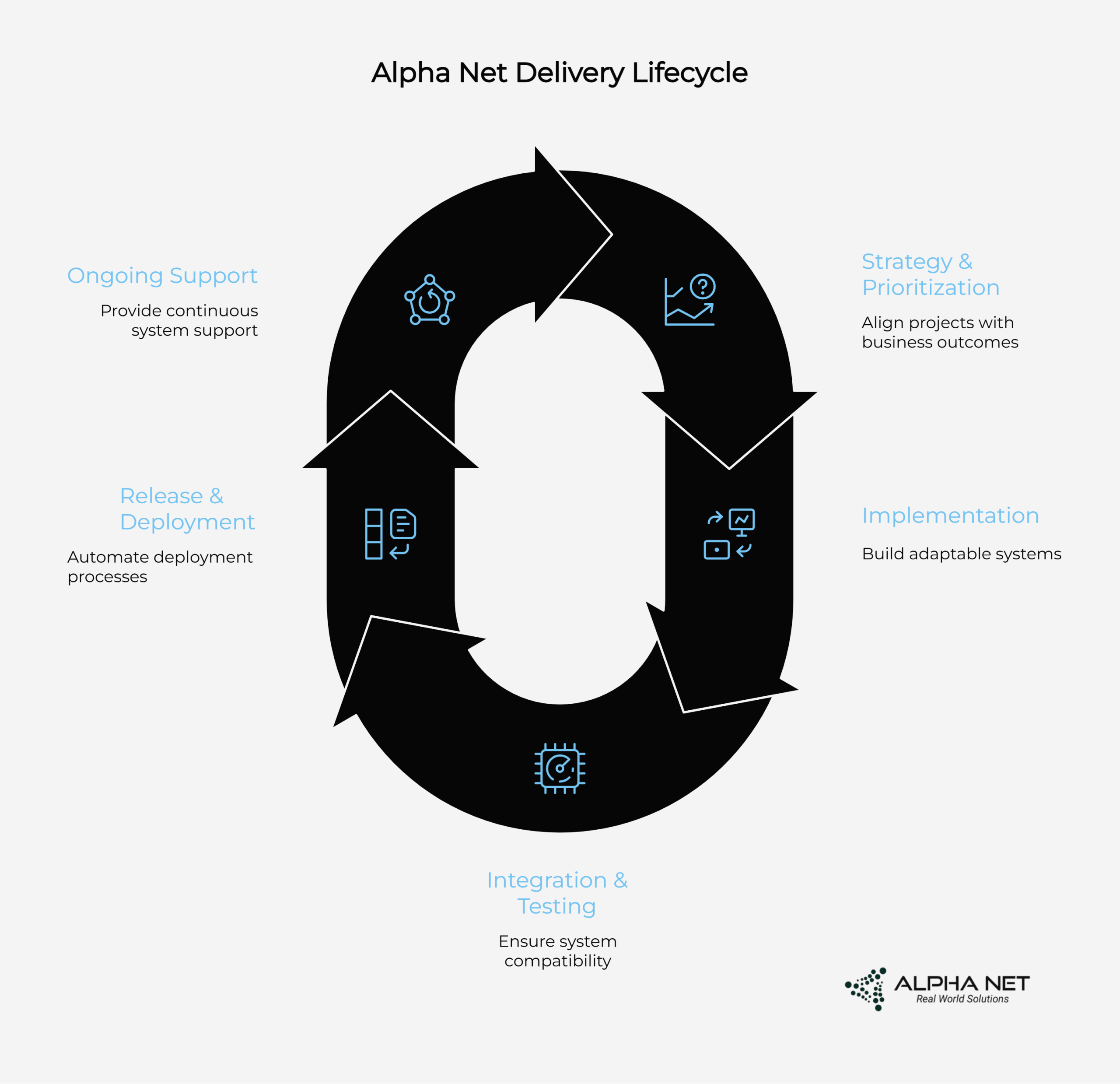
5. Measurable Business Value & ROI: Proving IT’s Worth
The Accountability Revolution
CIOs increasingly operate under board-level scrutiny that would make a tax audit look casual. Business value and ROI aren’t just nice-to-haves anymore—they’re survival requirements in an environment where every dollar spent needs to show a clear return.
The statistics paint a stark picture of this new reality. The “2024 Technology Spending Intentions Survey” found 49% of the 938 global IT and business decision-makers polled late last year expect to keep technology budgets even with 2023 levels, while 47% said spending would increase. In this environment of constrained or flat budgets, every investment must demonstrate clear value.
The days of “trust us, this technology investment will pay off eventually” are over. Today’s CIOs need to demonstrate value in terms that CFOs understand and CEOs can defend to shareholders. This shift isn’t just about better reporting—it’s about better thinking, better planning, and better execution.
The Alpha Net ROI Framework
Here’s how Alpha Net helps you turn IT spend into measurable enterprise outcomes:
Define Baselines & KPIs: We establish clear metrics before we start building—speed-to-market improvements, cost per release reductions, defect rates, user satisfaction scores. These aren’t vanity metrics that look good in presentations; they’re business metrics that matter to your bottom line.
Track ROI with Precision: Time saved through automation. Reduced operational costs through efficiency gains. Improved user experience leading to higher productivity. Error reduction that prevents costly mistakes. We don’t just track these metrics—we tie them directly to financial impact.
Connect Technical Delivery to Business Outcomes: Sales lift from better customer systems. Process digitization that reduces manual work. Error reduction that improves customer satisfaction. We build a clear cause-and-effect chain from technical improvements to business results.
Alpha Net embeds ROI discipline into every delivery cycle, turning IT spend from a necessary evil into a measurable competitive advantage. Every project comes with a business case, every milestone includes ROI measurement, and every success gets quantified in terms that matter to business leaders.
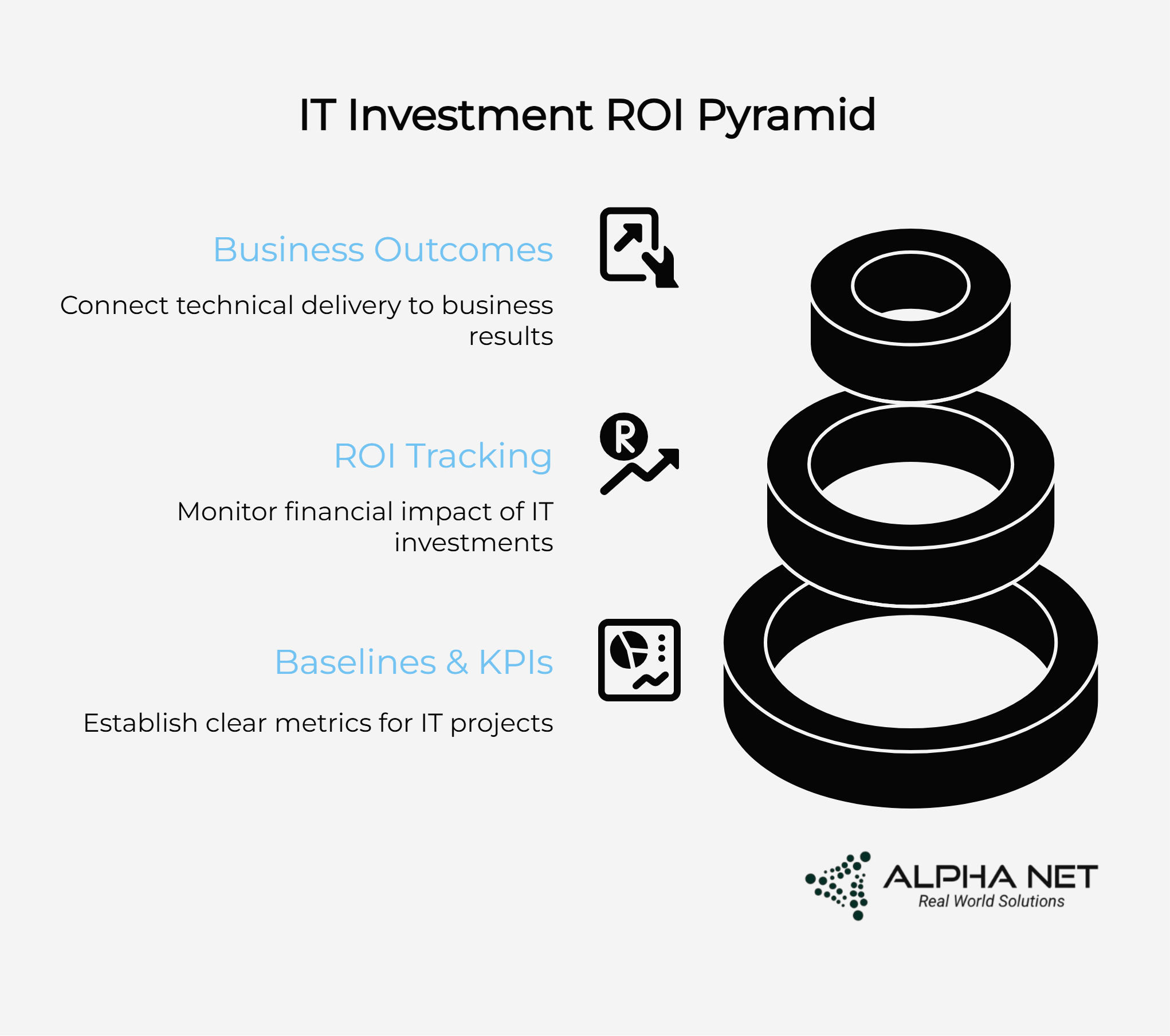
6. The Transformation Pattern: What Success Looks Like
The Common CIO Scenario
Here’s a scenario we see repeatedly across enterprises: A CIO facing a six-month backlog that includes critical HR system upgrades, Finance reporting automation, and Security compliance requirements. The pattern is eerily consistent across industries—manufacturing, healthcare, financial services, retail.
The symptoms are always familiar: Business leaders complaining about IT responsiveness while the CIO firefights daily crises. Development teams working overtime but backlogs that keep growing like compound interest. Board meetings that turn into defensive sessions about delayed projects and budget overruns.
The broader context makes this even more challenging. IT budget as a percentage of revenue ranges from nearly 8 percent in banking and securities to less than 2 percent in construction and manufacturing, with an average of 3.64 percent for all industries, according to Deloitte’s research. Yet regardless of industry, the expectation for digital transformation and innovation remains consistently high.
We’ve seen this story play out dozens of times: HR teams manually processing employee data because system implementations stall. Finance creating reports in Excel because automated systems crash during month-end processing. Security using spreadsheets to track compliance because expensive platforms won’t integrate with existing infrastructure.
The CIO ends up spending most of their time explaining problems instead of solving them. Their best people burn out and start looking elsewhere. The CEO starts asking uncomfortable questions about IT’s contribution to business value.
The Alpha Net Approach: A Proven Methodology
Based on our experience across multiple enterprise transformations, here’s how we typically approach these situations:
Phase 1: Rational Prioritization (Weeks 1-2): We help establish business-aligned metrics rather than prioritizing by technical complexity or political pressure. Critical business functions get priority. Nice-to-have features get properly deferred. Teams finally get a clear roadmap that makes sense to both technical and business stakeholders.
Phase 2: Specialized Team Deployment (Weeks 3-8): Our functional experts tackle key modules simultaneously. HR specialists handle platform implementations while Finance experts build reporting automation. Security professionals integrate compliance systems with existing infrastructure—all working in parallel rather than sequentially.
Phase 3: Accelerated Delivery (Weeks 9-12): Using CI/CD pipelines and lean DevOps practices, we compress typical delivery timelines significantly. Automated testing catches issues before production deployment. Deployment automation eliminates the usual weekend deployment drama.
Phase 4: Sustainable Operations (Ongoing): Our support framework ensures system reliability while development teams handle enhancements and optimizations. Internal IT teams can finally focus on strategic initiatives instead of constant firefighting.
The Results Pattern: Measurable Transformation
While every client situation is unique, we consistently see similar transformation patterns:
- Delivery acceleration: Projects that typically take 12+ months delivered in 3-6 months
- Backlog reduction: 30-50% reduction in backlog with remaining items properly prioritized by business value
- Stakeholder confidence: Business leaders shifting from complaints to collaboration as IT begins delivering predictably
- Team dynamics: Dramatic improvement in team morale as firefighting decreases and strategic work increases
- Demonstrable ROI: Clear measurement of reduced operational costs and improved business process efficiency
What This Means for CIOs
The transformation from firefighting to strategic leadership follows a predictable pattern when the right approach is applied consistently. IT organizations move from being cost centers that business leaders complain about to strategic assets that business leaders rely on for competitive advantage.
Board meetings transform from damage control sessions into strategic planning discussions about new initiatives and market opportunities. The CIO role evolves from chief problem explainer to chief business enabler.
The research supports this transformation potential. Ninety percent of CIOs surveyed say their organizations are using cloud-based services, and CIOs surveyed spend an average of 22 percent of the IT budget on cloud-based services, an amount they expect to double (44 percent) in the next three years. This shift toward more agile, scalable infrastructure creates the foundation for the kind of responsive IT organization that business leaders demand.
This isn’t theory—it’s a methodology we’ve refined through real-world enterprise engagements across multiple industries and company sizes.
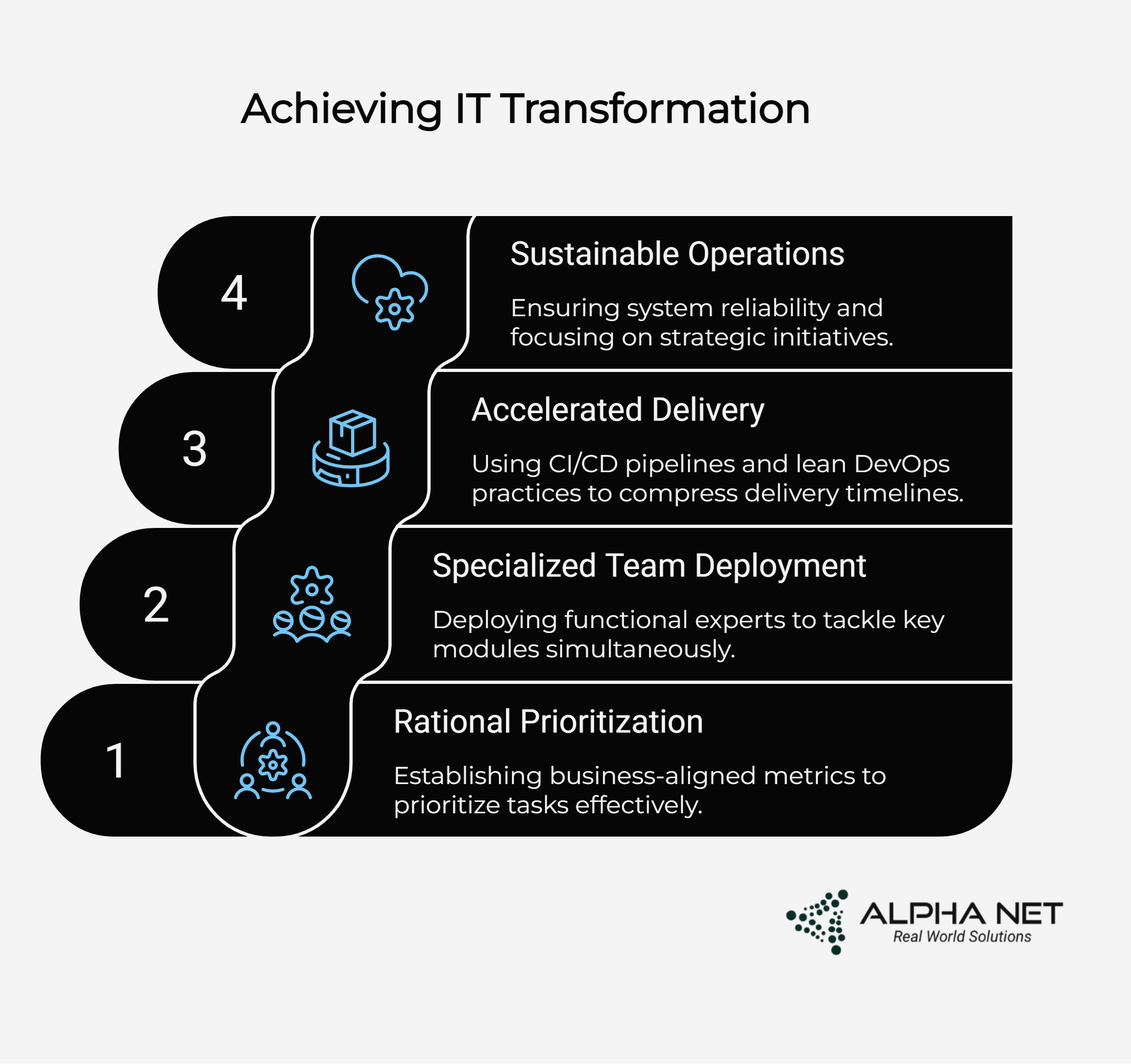
In Summary: Why CIOs Win with Alpha Net
The transformation from firefighting to strategic leadership doesn’t happen by accident. It requires the right combination of people, processes, technology, and mindset. Alpha Net delivers all four through our integrated approach:
Functionally Expert Delivery Teams: People who understand your business context and can deliver results without lengthy learning curves
Enterprise-Grade Technology Solutions: Platforms and frameworks that work reliably in real-world enterprise environments
Lean, DevOps-Enabled Pipelines: Processes that balance speed with stability, innovation with reliability
Outcome-Driven Metrics and ROI Focus: Measurement frameworks that demonstrate clear business value
This combination shifts CIOs from backlog management to business acceleration—delivering the agility, value, and sustained innovation that modern enterprises demand. It transforms IT from a necessary cost into a competitive advantage.
The statistics make the imperative clear: with 43 percent of CIOs saying core modernization is the technology area expected to have the most impact on the business in the next three years, and 75 percent of survey respondents saying they use cloud services because they increase scalability, the window for transformation is wide open—but it won’t stay that way forever.
The question isn’t whether your organization needs this transformation—it’s whether you’ll lead it or let it happen to you. The companies that figure this out first will have a significant advantage over those that don’t. The CIOs who embrace this new reality will become indispensable strategic leaders, while those who cling to the old firefighting model will find themselves increasingly irrelevant.
Ready to Transform Your Enterprise?
The future belongs to organizations that can deliver technology solutions as fast as business demands evolve. Alpha Net Consulting helps you build that capability systematically, measurably, and sustainably.
Ready to unlock enterprise-scale speed and business-aligned delivery? Let’s talk about turning your IT organization from a bottleneck into a business accelerator.
Visit anetcorp.com/contact today to schedule a consultation and kickstart your transformation.
The conversation starts with understanding where you are, where you need to be, and the most effective path to get there. Every transformation is unique, but the principles of success are universal: the right people, the right processes, the right technology, and the right mindset.
Your business can’t wait for technology. Let’s make sure technology doesn’t have to wait for your business.
Industry Data Sources:
- Deloitte Global CIO Survey – Technology Investment and Budgeting Research
- IDC Future Enterprise Resiliency and Spending Survey, Wave 3 (March 2024)
- Forrester IT Spending Projections 2024
- ISACA 2024 Cybersecurity Survey
- McKinsey Digital Transformation and Technical Debt Research
- TechTarget 2024 Technology Spending Intentions Survey
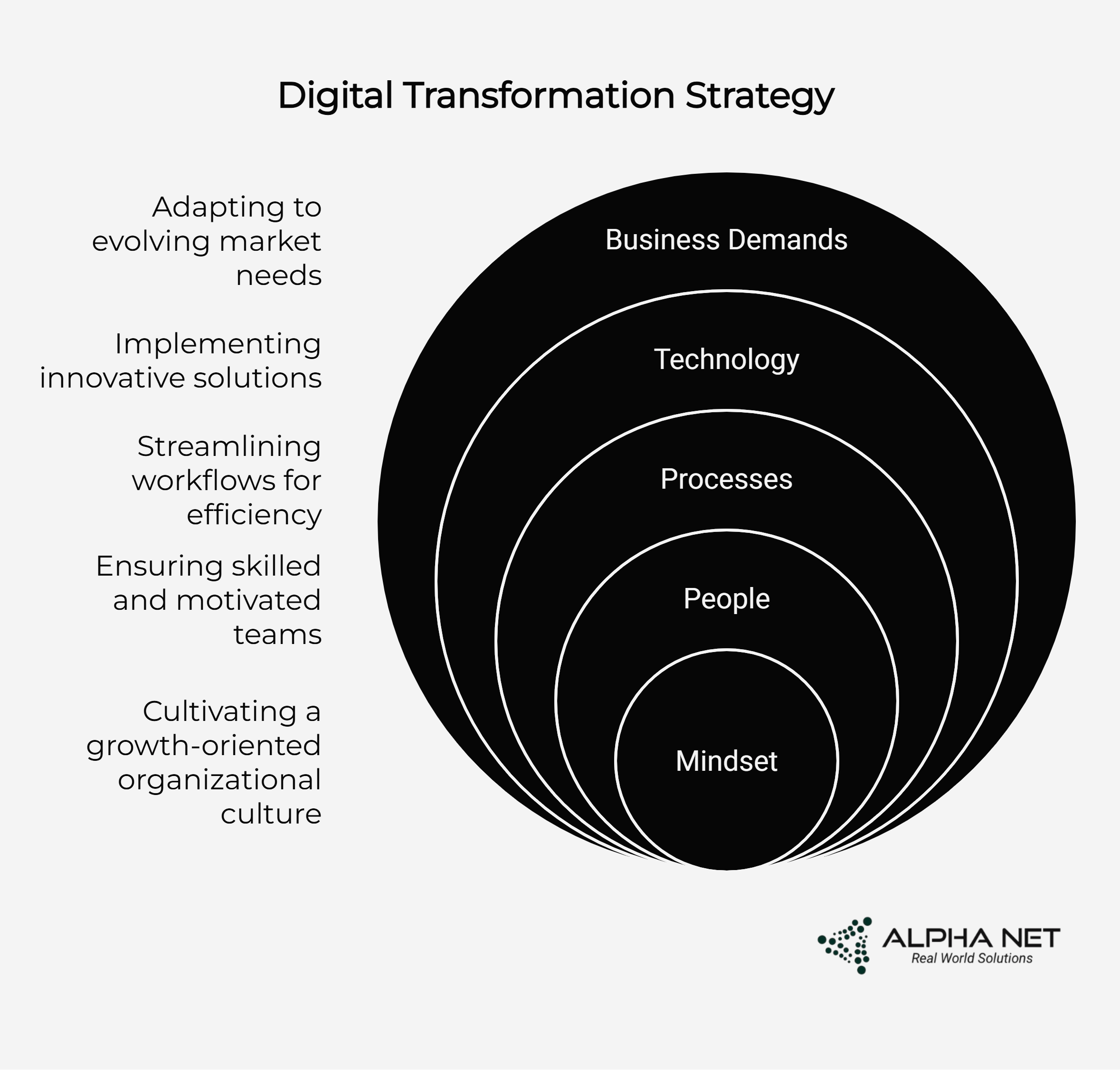
Frequently Asked Questions
Q: What is the “Great Acceleration” and why should CIOs care?
A: The Great Acceleration is our term for the current business environment where technology demands multiply faster than Moore’s Law, while IT delivery capabilities remain stuck in neutral. It’s that Monday morning feeling when your inbox overflows with delayed projects, the CEO wants answers about digital transformation delays, and your backlog keeps growing like weeds after spring rain. Research shows IT departments spend 55% of their budget maintaining operations, leaving only 19% for innovation—like trying to win a race while dragging an anchor.
Q: How is Alpha Net different from other consulting firms?
A: We don’t just throw more bodies at your problems—that’s like solving traffic jams by building more lanes. Instead, we enhance CIO capabilities on two critical fronts: specialized teams that understand your business context immediately (no six-month learning curves), and enterprise-grade technology solutions that actually work in production, not just in PowerPoint presentations. When your Finance team needs real-time reporting, our consultants understand both the technical requirements and the business decisions that depend on that data.
Q: What platforms and systems does Alpha Net specialize in?
A: We implement, integrate, and support core enterprise platforms including Workday, Oracle, SAP, ServiceNow, Salesforce, and Adobe across HR, Finance, Security, Supply Chain, and Administrative functions. More importantly, we make these systems talk to each other like old friends instead of arguing like distant relatives. Our solutions span the full enterprise spectrum with expertise that comes from doing it hundreds of times across dozens of industries.
Q: How long do typical Alpha Net engagements take?
A: While every situation is unique, we typically deliver dramatic results within 12 weeks using our proven four-phase methodology: rational prioritization (weeks 1-2), specialized team deployment (weeks 3-8), accelerated delivery (weeks 9-12), and ongoing sustainable operations. Projects that traditionally take 12+ months often get completed in 3-6 months, with clients seeing 30-50% backlog reduction and measurable ROI throughout the process.
Q: How do you prove ROI for IT investments?
A: We embed ROI discipline into every delivery cycle with a framework that CFOs understand and CEOs can defend to shareholders. This includes defining clear baselines and KPIs before building anything, tracking ROI with precision throughout the project, and connecting technical delivery directly to business outcomes. Every project comes with a business case, every milestone includes ROI measurement, and every success gets quantified in terms that matter to business leaders—not just vanity metrics that look good in presentations.
Q: What about the technology talent shortage and team burnout?
A: Rather than competing in the brutal talent market for unicorns who understand both technology and business, we provide those specialized resources immediately. Our teams hit the ground running without typical training ramp-up or misaligned skillsets. By eliminating constant firefighting that burns out IT teams, we help restore strategic focus that makes technology work engaging again. We’ve seen dramatic improvements in team morale as organizations shift from reactive to proactive IT management.
Q: How do you handle the integration challenges that kill most enterprise projects?
A: Cross-functional orchestration is where most projects die, so we bake integration thinking into everything from day one. We don’t just test whether your system works—we test whether it works with everything else in your environment, simulating real-world conditions and edge cases. Our automated deployment pipelines turn nail-biting releases into routine operations, while our 24×7 support actually means 24×7 support when you need it most.
Q: What’s your approach to AI and emerging technologies?
A: McKinsey notes that only 30% of organizations using generative AI for IT report significant impact—most get stuck in “pilot purgatory” running endless proof-of-concepts that never reach production. We focus on AI-driven business results rather than AI headlines, treating AI as a business tool rather than a science experiment. We balance innovation with reliability, building systems with monitoring and observability baked in from day one.
Q: Does your approach work across different industries?
A: Absolutely. While IT budgets vary dramatically—from nearly 8% in banking to less than 2% in construction—the fundamental challenges remain consistent across manufacturing, healthcare, financial services, retail, and other sectors. The patterns of backlog growth, technical debt accumulation, and talent challenges are remarkably similar regardless of industry. Our functional experts come with deep industry knowledge, including regulatory requirements and compliance frameworks.
Q: How do I get started with Alpha Net Consulting?
A: The conversation starts with understanding where you are, where you need to be, and the most effective path to get there. We look for CIOs ready to pivot from firefighting to strategic leadership—those willing to embrace board-level accountability for business outcomes and commit to fundamentally changing how technology operates within their enterprise. Visit anetcorp.com/contact to schedule a consultation and kickstart your transformation from IT bottleneck to business accelerator.
